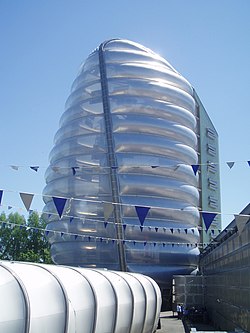
Key historic sites of Leicester Old Town overlaid onto a modern map of the city. The Roman and medieval walls are marked by the dotted line. The one surviving Roman ruin is marked in purple. The secular sites are in blue. The towns five surviving ancient churches are in red. The dissolved mendicant and chantry foundations are in black. The key site of Leicester Abbey over the river is beyond the borders of the map to the north east.
The following is a timeline of the history of the city of Leicester , the county town of Leicestershire, in England.
Contents
- Prehistory
- Palaeolithic
- Mesolithic
- Neolithic
- Copper Age
- Bronze Age
- Iron Age Period
- Roman period
- 1st century CE (AD)
- 2nd century
- 3rd century
- 4th century
- 5th century
- Anglo-Saxon period
- 6th century
- 7th century
- 8th century
- Early 9th century (800-870's)
- Viking Period
- Late 9th Century (870-899)
- 10th century
- Early 11th century
- Late 11th century
- 12th century
- 13th century
- 14th century
- 15th century
- 16th century
- 17th century
- 18th century
- 19th century
- 1800s – 1810s
- 1820s
- 1830s
- 1840s
- 1850s
- 1860s
- 1870s
- 1880s
- 1890s
- 20th century
- 1900s
- 1910s
- 1920s
- 1930s
- 1940s
- 1950s
- 1960s
- 1970s
- 1980s
- 1990s
- 21st century
- 2000s
- 2010s
- 2020s
- See also
- References
- Further reading
- Published before the 19th century
- Published in the 19th century
- Published in the 20th century
- Published in the 21st century
- External links





































































